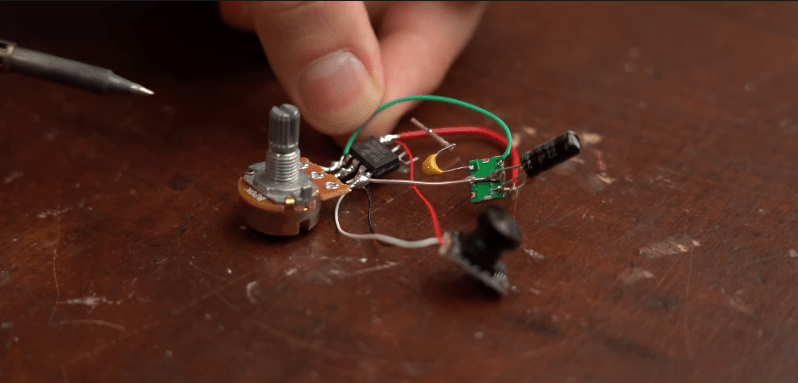WiFi Jammer Created from DIY Video Transmitter


With the rise in popularity of FPV drones, there has been an influx of affordable wireless video technology flooding the market. Inspired by his experience of flying and crashing a cheap FPV drone, [GreatScott] decided to take on the challenge of building his own video transmitter. Little did he know, the task proved to be much more difficult than anticipated.
In the FPV world, while digital technology has made significant advancements, many systems still rely on analog video, particularly for drone racing. Despite the fact that the video quality of analog transmission is not exceptional, it offers the advantage of remarkably low latency. This technology shares similarities with the classic analog TV broadcasts, primarily utilizing the 5.8 GHz license-free bands. Essentially, it involves transmitting an analog video signal that is frequency modulated onto a 5.8 GHz carrier signal using an appropriately sized antenna.
Being confronted with the challenges of building his own video transmitter, [GreatScott] soon realized the complexity and technical intricacies involved. The task required a deep understanding of both analog video transmission and RF communication. It became apparent that creating a reliable and efficient video transmitter necessitated expertise in various disciplines.
The availability of cheap wireless video technology has undoubtedly expanded the FPV drone market. However, the ambition to develop a homemade video transmitter compels enthusiasts like [GreatScott] to venture into uncharted territory, facing unexpected obstacles along the way. Nevertheless, the pursuit of building one’s own video transmitter offers valuable opportunities for learning and innovation within the FPV community.
After realizing that his initial attempt with a simple circuit built from discrete components failed, [GreatScott] shifted his focus to voltage-controlled oscillators (VCO). He decided to purchase a couple of 5.8 GHz VCOs from Aliexpress. To ensure the VCOs received the proper input level, he constructed a basic opamp circuit that could boost the FPV camera video signal. Unfortunately, this configuration did not result in any recognizable image appearing on his video receiver goggles.
In order to verify the frequency output of the VCOs, [GreatScott] obtained similar 2.4 GHz VCOs and proceeded to build a short-range WiFi jammer with a range of 20 cm. Utilizing a signal generator to generate a simple input signal, he found that the jammer successfully interfered with the WiFi connection on his laptop.
Continuing his experimentations with various VCOs, [GreatScott] made some progress by successfully transmitting a barely distinguishable image using a Maxim 2.4 GHz VCO. However, he is still seeking input and suggestions from others on what might be missing in the VTX circuit.
Feel free to share any ideas or insights in the comments below.
It is strongly advised against building RF circuits that interfere with legitimate signals or broadcasting out of band, as this could lead to serious consequences, including potential intervention from authorities. Instead, if you are interested in creating your own digital video transmission, consider exploring the Wifibroadcast project. By focusing on this project, you can engage in a legal and regulated approach to achieving your goal. Remember, it is essential to prioritize responsible and authorized activities within the realm of RF circuits and broadcasting.








